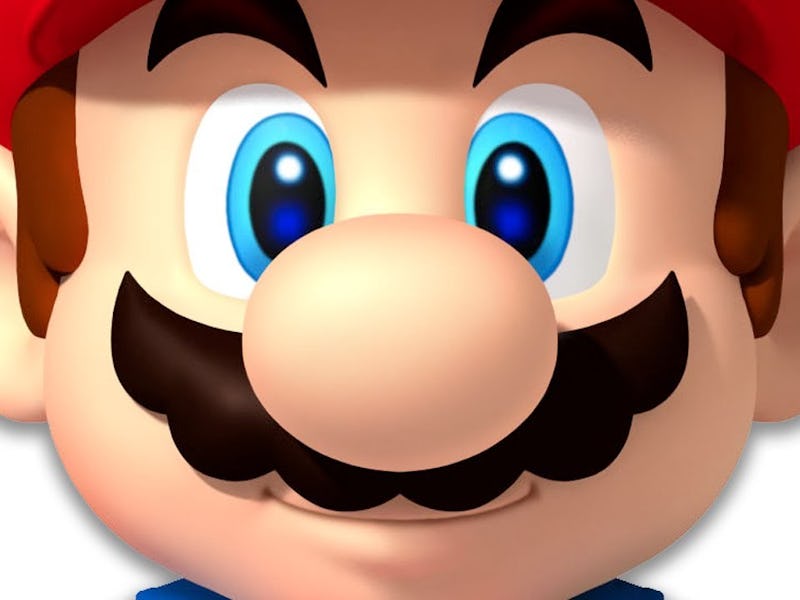This week, we celebrate a hallowed moment in the brief, but beautiful history of console gaming. 20 years ago, Super Mario 64 was released in Japan alongside the Nintendo 64.
If you were a nerd in 1996, the odds are good that a Nintendo 64 (and Mario) was the love of your life. Even if your parents couldn’t afford the $250 price tag, the technological marvel was likely still at the top of your wish list. In 1996, I climbed onto my bike and rode 2 miles each way to the nearest Blockbuster, just so I could spend a few moments trying my hand at Bob-omb’s Battlefield on the store’s display unit.
I wasn’t the only indoor kid enamored with the plumber’s new look. Over the course of the Nintendo 64’s run, Super Mario 64 became the highest-selling title in the fifth console generation, and with very good reason. In Super Mario 64, the world’s most famous plumber took a leap out of semi-retirement and into a brand new dimension.
Here just a handful of the reasons that, in all the titles to feature Nintendo’s rotund blue collar hero, Super Mario 64 has loomed large in the hearts of gamers for two decades:
1. The Revival Of a Legend
Though Nintendo had taken to putting Mario on just about every property it puts out even as early as 1996, he was always flanked by Nintendo’s growing legion of characters, which took some of the heavy-lifting off his shoulders. Outings like Mario Tennis, Super Mario Kart, or even the classic Mario Teaches Typing can’t really be considered Mario games, because he’s mostly a figurehead, as opposed to the central protagonist. In fact, when Super Mario 64 released, Mario hadn’t been the star of his own original console adventure since 1990’s Super Mario World.
However, when the company wanted to launch its audacious new console on the strength of a handful of games, Mario was the man they looked to.
The big one is pretty reliable, too.
2. A Brand New Hero
For the first time in the series, Super Mario 64 plops the plumber into the third dimension, bringing with it a lovably cartoonish quality that had — up to that point — only been featured on the box. Remember, before he made his appearance in Super Mario 64, Mario basically looked like this:
In pushing Mario into a new dimension, Nintendo realized the intended vision of its flagship hero. As a result, Mario’s appearance has become so iconic that the art has been featured in the Smithsonian.
3. Immersion At Its Finest
From a narrative standpoint, Super Mario 64 had pretty much the same arc as every title that came before it: This giant lizard snatches Mario’s magical girlfriend, which forces the plumber to jump on a bunch of creatures until he can finally confront and jump on aforementioned giant lizard.
Super Mario 64 actually stands as the first game ever to feature a free-floating camera, something that’s been ripped off by pretty much every other third person game ever. The new camerawork helped Super Mario 64’s tiny, yet enticingly open version of Peach’s castle set the stage for Mario’s most immersive, compelling adventure ever.
4. Another Level of Challenge
Another benefit of plunging into the third dimension is the extra layer of difficulty that comes with it. There’s just more to fear than a typical 2D level. When new players dropped into the game’s opening level for the first time, they found themselves being assaulted with danger from all sides, a new sensation for a Mario adventures.
5. New Mechanics
In all previous Mario titles, the developers had consistently introduced new spins on Mario’s abilities — the mushroom, the fireball, the raccoon suit, etc. — but most of those abilities simply equated to the ability to gain some level of control over Mario’s jumping ability. Super Mario 64, however, changed all that by allowing the plumber an array of talents that extended beyond his ability to squash stuff under his heel.
Who wasn’t secretly elated to toss that giant d-bag around a level for the first time in the series’ history?
6. The Illusion of Choice
Unlike the series’ previously ultra-linear approach to Mario’s adventure, Super Mario 64 saddled the plumber with 120 simultaneous tasks and told him to get them done in any order he wanted to. Anyone who played the game knows that it was literally impossible to complete the most difficult tasks without knocking out some low-level challenges at first, but players who’d racked up only a handful of in-game hours and who found themselves hungering for a challenge could always leap-frog onto more difficult terrain.
7. The Compulsion to Replay
The game’s difficulty curve operated on sine wave, which meant that it was nearly impossible to accomplish every task set forth on a level in one go-round, a tactic that forced gamers to get out into Peach’s Castle and start opening doors in the search for new feats to add to their resume. When you’d managed to get a little more experience under your belt, tack on some experience (and unlock the wing cap), you could come back and mop up the remainder.
It was a simple trick that had players running back and forth around Peach’s possessed estate, learning their way around, and ultimate falling in love with their surroundings.
8. The Gaming Gift
The innovation dropped in the single release of Super Mario 64 is the reason we have a slew of imitators extending out beyond even the fifth generation of consoles. While the quality of these pretenders ranged from abysmal to Conker’s Bad Fur Day, Super Mario 64’s inspirational spur in the side of the platforming genre set the bar for an entire generation of games.
